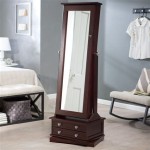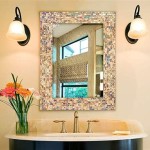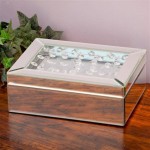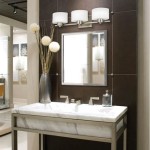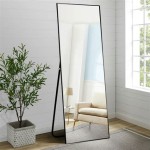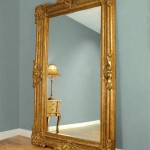How Do I Mirror My iPhone 8 to Macbook Air?
Mirroring an iPhone 8's screen to a Macbook Air allows users to view and interact with their iPhone content on a larger display. This can be beneficial for presentations, watching videos, playing games, or simply sharing content with others. Several methods facilitate this mirroring functionality, each with its advantages and disadvantages.
1. Using AirPlay with Compatible Apps
AirPlay is Apple's proprietary wireless streaming technology. Macbook Airs and iPhone 8s both support AirPlay, making it a straightforward method for screen mirroring. However, it's essential to note that AirPlay mirroring to a Mac requires compatible software. Users can't directly mirror their entire iPhone screen to the Mac's desktop without utilizing specific applications.
Several applications utilize AirPlay to receive and display iPhone screen content. Popular choices include QuickTime Player, which is pre-installed on Macs, and third-party software such as Reflector. These applications essentially turn the Mac into an AirPlay receiver, allowing users to select their Mac as an AirPlay destination on their iPhone 8.
To mirror using this method, ensure both devices are connected to the same Wi-Fi network. Open the receiving application on the Macbook Air, then access the Control Center on the iPhone 8. Tap "Screen Mirroring" and select the Macbook Air from the list of available devices. The iPhone's screen will then be mirrored on the Mac's display.
2. Leveraging Third-Party Screen Mirroring Applications
Beyond AirPlay receivers, dedicated third-party screen mirroring applications are available for macOS. These often offer advanced features compared to basic AirPlay receivers, such as recording capabilities, improved performance, and customizable settings. Many of these applications offer free trials, allowing users to test their functionality before purchasing a license.
These applications typically work by installing a client application on the iPhone and a receiver application on the Macbook Air. After establishing a connection, usually over the local Wi-Fi network, users can initiate screen mirroring from their iPhone. The quality and latency of the mirroring experience often depend on the specific application and the network conditions.
3. Utilizing ApowerMirror
ApowerMirror is a popular cross-platform screen mirroring application that supports both Windows and macOS. It allows for both wired and wireless mirroring, offering flexibility for users. Connecting the iPhone 8 to the Macbook Air via USB cable can reduce latency and improve the mirroring quality, which is beneficial for activities like gaming.
ApowerMirror also offers features beyond basic screen mirroring, such as screen recording, taking screenshots, and even controlling the iPhone from the Mac using a keyboard and mouse. This expanded functionality makes it a versatile option for various use cases.
4. Exploring LetsView
LetsView is a free wireless screen mirroring application available for multiple platforms, including macOS and iOS. Its free availability makes it an attractive option for users looking for a no-cost solution. LetsView utilizes AirPlay technology for mirroring, requiring both devices to be on the same Wi-Fi network.
While LetsView offers basic screen mirroring functionality comparable to other AirPlay receivers, some advanced features may be limited compared to paid applications. Nevertheless, its ease of use and free access make it a viable option for simple mirroring tasks.
5. Considering 5KPlayer
5KPlayer functions both as a media player and a screen mirroring receiver. It supports AirPlay and DLNA, providing compatibility with a wide range of devices. This dual functionality can be useful for users who want a single application for playing local media files and mirroring their iPhone screen.
Similar to other AirPlay receivers, 5KPlayer requires both devices to be connected to the same network. Users can then select 5KPlayer as an AirPlay destination on their iPhone 8 to initiate screen mirroring. Its media playback capabilities make it a potential all-in-one solution for managing and viewing various media content.
6. Connecting Through a Wired Connection (Limited Functionality)
While wireless methods are generally preferred for convenience, a wired connection can be used for certain limited mirroring functionalities. Connecting the iPhone 8 to the Macbook Air with a USB cable and opening QuickTime Player allows for recording the iPhone's screen. However, this method doesn't provide real-time interactive mirroring.
This wired approach is primarily useful for creating screen recordings of iPhone activity, such as tutorials or demonstrations. It's not a suitable replacement for true screen mirroring when real-time interaction with the iPhone's content is required.
7. Choosing the Right Method
The best method for mirroring an iPhone 8 to a Macbook Air depends on individual needs and preferences. For basic screen sharing and presentations, AirPlay with QuickTime Player or a free application like LetsView may suffice. For more advanced features like screen recording and remote control, paid applications like ApowerMirror provide a more comprehensive solution.
Users should consider factors such as their budget, desired features, and network conditions when choosing a mirroring method. Evaluating trial versions of paid applications can help determine if their advanced functionalities justify the cost before committing to a purchase.

How To Mirror Iphone Mac Without Wi Fi

2024 Updated How To Mirror Iphone Mac With 5 Methods

How To Screen Mirror Iphone Macbook 2024

2024 Updated How To Mirror Iphone Mac With 5 Methods

Use Airplay To Stream Or Mirror The Screen Of Your Iphone Ipad Apple Support

Newest How To Mirror Iphone Mac Macbook Airdroid

How To Mirror Iphone Screen Mac

Use Airplay To Stream Or Mirror The Screen Of Your Iphone Ipad Apple Support

Answered 2024 How To Mirror Iphone Mac With Usb

How To Screen Mirror Iphone Macbook 2024


